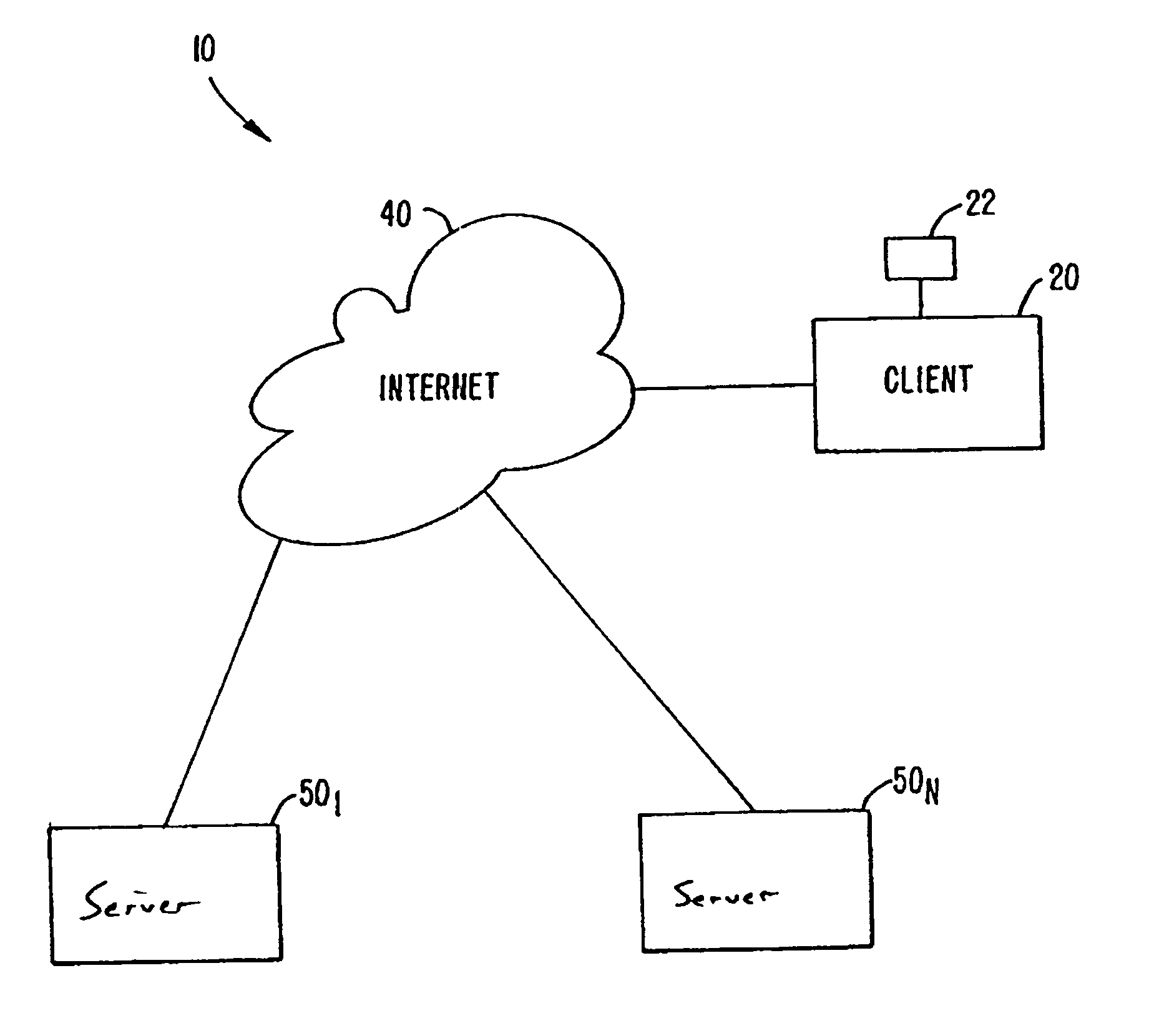Search processing with automatic categorization of queries
a search processing and automatic categorization technology, applied in the field of network and internet search and interface systems, can solve the problem that the current technology used by search providers does not understand queries the same way
- Summary
- Abstract
- Description
- Claims
- Application Information
AI Technical Summary
Benefits of technology
Problems solved by technology
Method used
Image
Examples
Embodiment Construction
I. Overview
A. Network Implementation
[0028]FIG. 1 illustrates a general overview of an information retrieval and communication network 10 including a client system 20 according to an embodiment of the present invention. In computer network 10, client system 20 is coupled through the Internet 40, or other communication network, e.g., over any local area network (LAN) or wide area network (WAN) connection, to any number of server systems 501 to 50N. As will be described herein, client system 20 is configured according to the present invention to communicate with any of server systems 501 to 50N, e.g., to access, receive, retrieve and display media content and other information such as web pages.
[0029] Several elements in the system shown in FIG. 1 include conventional, well-known elements that need not be explained in detail here. For example, client system 20 could include a desktop personal computer, workstation, laptop, personal digital assistant (PDA), cell phone, or any WAP-ena...
PUM
 Login to View More
Login to View More Abstract
Description
Claims
Application Information
 Login to View More
Login to View More - R&D
- Intellectual Property
- Life Sciences
- Materials
- Tech Scout
- Unparalleled Data Quality
- Higher Quality Content
- 60% Fewer Hallucinations
Browse by: Latest US Patents, China's latest patents, Technical Efficacy Thesaurus, Application Domain, Technology Topic, Popular Technical Reports.
© 2025 PatSnap. All rights reserved.Legal|Privacy policy|Modern Slavery Act Transparency Statement|Sitemap|About US| Contact US: help@patsnap.com



